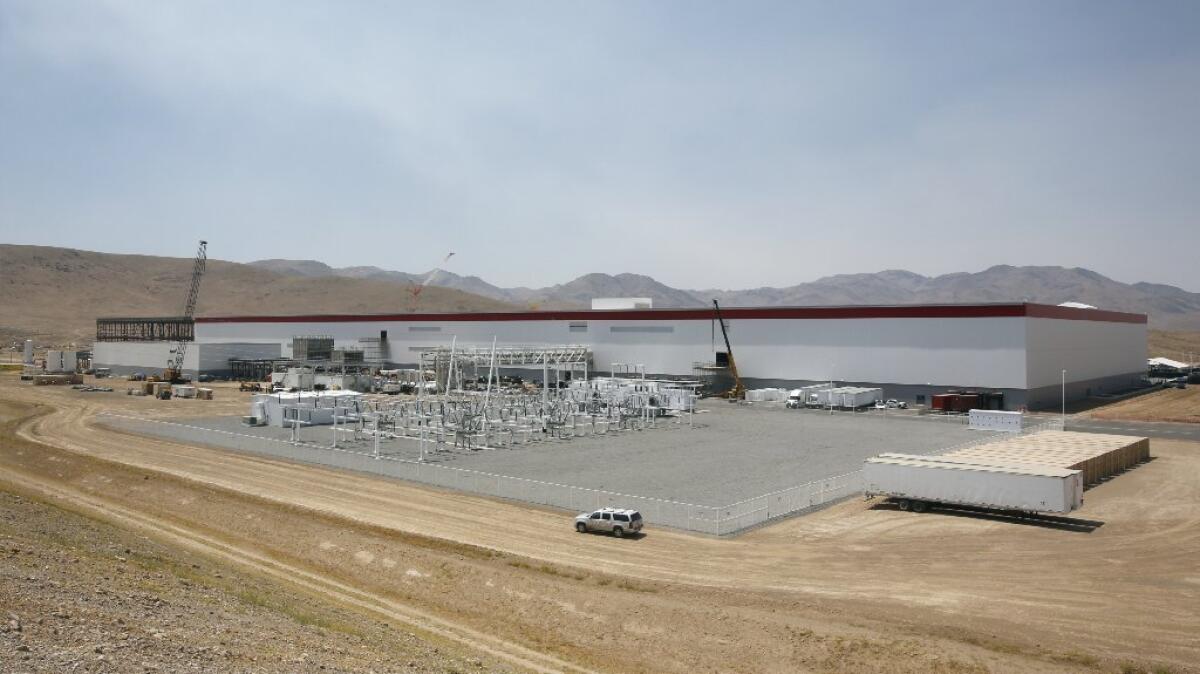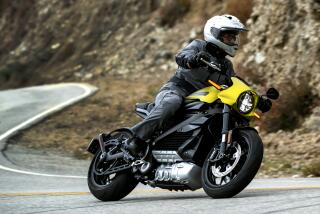Tesla begins churning out battery cells at Nevada Gigafactory

Batteries are crucial to the future of Tesla, best known as a car company but currently transforming itself into an ambitious alternative energy provider.
On Wednesday, the company and its partner, Panasonic, announced the start of mass production of lithium-ion battery cells at Teslaâs giant Nevada battery factory dubbed the Gigafactory.
Itâs an important step for a couple of big reasons.
First, huge numbers of batteries are needed to power Tesla vehicles, including the mid-market Model 3, set to begin production later this year. In 2018, the company plans to produce 500,000 vehicles, including the Model S and Model X, all packed with Tesla-made batteries.
Second, the Nevada factory manufactures Powerwall batteries for homes and businesses to store energy produced by solar rooftops. In November, Tesla merged with rooftop solar company SolarCity.
The battery cells, which look like bigger versions of an AA battery, are clustered together into modules for Powerwalls and automobiles.
The current production run will supply the Powerwalls, also built in Nevada. Cell production will begin for the Model 3 in the spring, Tesla said.
To date, few battery cells have been manufactured in the U.S.
âBringing cell production to the U.S. allows us to create thousands of American jobs,â the company noted. The Gigafactory will eventually employ 6,500 workers, and create 20,000 to 30,000 jobs in the region, Tesla said.
On Tuesday, Tesla released its fourth-quarter production and delivery numbers, which slightly missed its targets. The company said it produced 24,882 vehicles, bringing its 2016 total to 83,922 vehicles, up 64% from 2015.
It delivered about 22,200 vehicles in the quarter, of which 12,700 were Model S and 9,500 were Model X. Total 2016 deliveries were about 76,230.
The company blamed âshort-term production challengesâ from late October through early December due to the transition to new Autopilot hardware for some delays in making new cars. As a result, vehicle production was weighted more heavily toward the end of the quarter than originally planned.
âWe were ultimately able to recover and hit our production goal, but the delay in production resulted in challenges that impacted quarterly deliveries, including, among other things, cars missing shipping cutoffs for Europe and Asia,â the company said. âAlthough we tried to recover these deliveries and expedite others by the end of the quarter, time ran out before we could deliver all customer cars.â
Tesla said that about 2,750 vehicles in total missed being counted as deliveries in the fourth quarter.
It also said vehicle demand in the last three months of the year was particularly strong. Net orders for the Model S and Model X were 52% higher than in the fourth quarter of 2015 and 24% higher than in the third quarter of 2016.







